Where the Creativity of Business Meets Art
Fourth Interview: Advanced Technology x Creativity (Part 2)
2 October 2023
Digest Movie
To me, tonal quality is an expression of emotion that communicates a feeling directly. It doesn’t need to go through the brain at all. Sound communicates emotion directly without passing through any kind of filter. (Tanaka)
Tanaka: Dr. Sugiyama, what do you feel when you listen to classical music?
Sugiyama: Honestly, I can’t put what I feel into words. Sometimes, the music can bring a tear to my eye. I’ve felt joy or even despair at times. I might go to a classical concert and be asked to go out for drinks afterward. But I won’t talk about the deep experience I had listening to the music. I don’t feel I can describe it very easily. I am unable to express myself well with my limited linguistic skills, and if I do end up trying to say something, it winds up sounding trite, and I feel as though I’ve ruined the experience, which I would rather treasure silently.
Okuda: I think that points to the nature of art itself. It isn’t filtered through the brain but touches or moves you directly, which is where its true charm lies.
Sugiyama: The human brain consists of a central core and peripheral areas. The core handles vital activities, or innate drives—maintaining the pulse, feeling hunger—while the peripheral areas are responsible for reasoning. As human beings have accumulated knowledge over the generations, these peripheral areas of the brain have become more active. For example, at a classical concert, for example, if you focus solely on the technical execution of the score, these peripheral areas will kick in and function as filters, and it becomes more difficult to genuinely feel the music. Music critics, with so much information in their heads, might be unable to feel the true emotional essence of the music. That is why a neophyte like myself can experience the music without any distractions. It reaches the brain’s core without passing through those peripheral areas. In what was said earlier about Koyasan, when Kukai reached enlightenment after intense spiritual practices, he described the mind state as “free from distractions.” I wonder if this means he trained himself to switch off the peripheral areas of his brain.
Tanaka: The reason I asked is that, to me, tonal quality is an expression of emotion that communicates a feeling directly. It doesn’t need to be processed by the brain at all. Sound communicates emotion directly without passing through any kind of filter. For that reason, if the recipient has a large range of emotions, they will suddenly feel sad or happy as they receive the communicated emotion. If someone feels indifferent to classical music, it might suggest a lack of emotional resonance between the musician and the listener, possibly due to mental filters on either side. When you receive an expression without any thought involved, it is purely heart-to-heart—a collision of emotions—so when one comes in contact with art, how much a person is able to receive the emotional message is quite important. Based on that way of thinking, it becomes important to have a range of experiences and foster a full range of emotions.
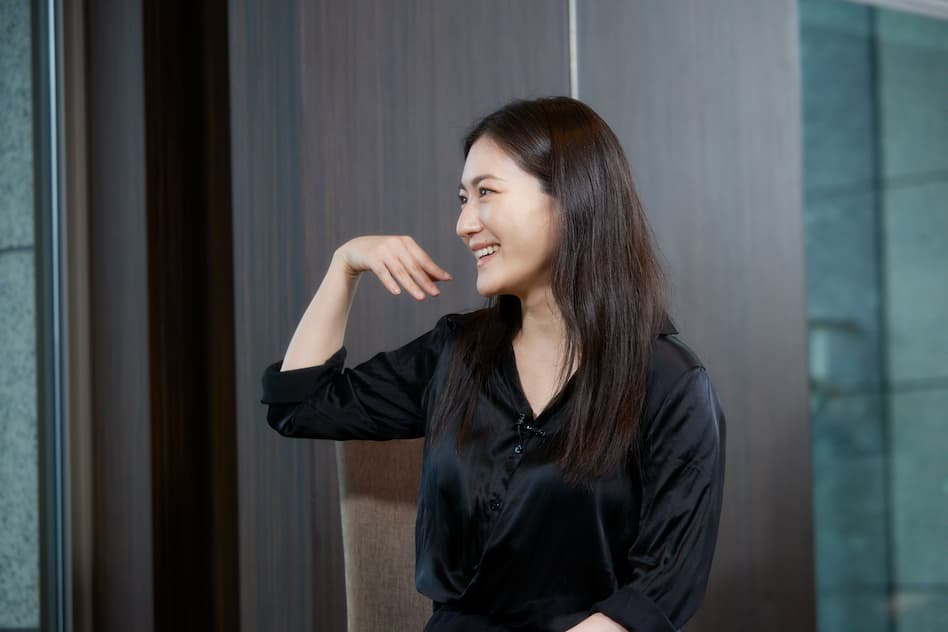
Sugiyama: Experiences are important, I agree. Without a richness of experiences, individuals might not develop the capacity to feel and respond on an emotional level. I call this “resonance.” It’s like when an object reacts to an incoming pulse at a certain wavelength—and you could think of this in terms of the heart—if the object is particularly receptive, it oscillates on the same wavelength. Similarly, if someone has cultivated their inner emotional life, they’ll have a heartfelt reaction, which is the desired outcome. It’s like a switch that opens the door to emotion, not only at a concert hall or art museum but even at work when discussing a serious matter. The emotional switch naturally gets pressed, and a sense of rapport emerges.
In business, unless you have people who possess many sensors for receptivity, it won’t be possible to transition to a new phase. The Koyasan Conference may well offer an immersive experience with real art that has lasting effects. (Okuda)
Okuda: It is exactly the same in business. For example, when a startup comes to JERA and proposes a collaboration, some people come across with great passion and others don’t make much of an impression. Someone who has had many types of experiences and has, in a general sense, cultivated their artistic sensibilities can more easily feel such things. In business, it’s impossible for people to shift their way of thinking unless they possess many sensors for receptivity. What I mean is that in a world where everyone has access to a good education, simply working hard gets you no further than incremental improvements to someone else’s business model.
In fact, just recently, after becoming president, I sat down for an interview to give a message to our employees. At the end, I was asked the question, “What should young people be doing?” I could tell that the interviewer was really asking, “What do you recommend young people study?” My answer was that while they still have energy in their twenties, they should go to concert halls and art museums or read the classics on weekends. They need to seize every opportunity to expose themselves to culture. That, I feel, is very important. Young people need to take every chance they get to “install” the sensors needed to enrich their receptivity. If they don’t do that, how can they be expected to adapt to change? In that sense, the Koyasan Conference may well offer exposure to true art in profound ways that have lasting effects.
Sugiyama: I agree about profound exposure to true art. Koyasan is in itself a special place. The centuries-old man-made forest has a mysterious, otherworldly atmosphere that heightens one’s senses. It is important to have such evocative places and events throughout the world that encourage experiences in addition to mechanisms that strengthen their effectiveness. These can take many forms. For some people, a live concert by a famous rock musician may fulfill that purpose while others might consider a rock show overpowering and prefer a classical concert. I think it’s good to have diversity.
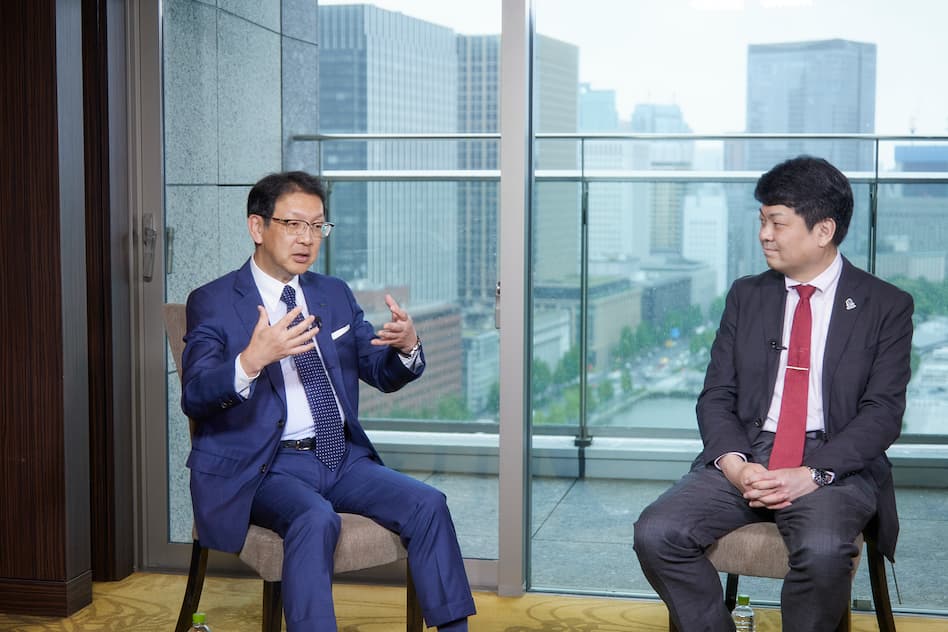
Tanaka: I would guess that even children who show no interest in music at first may become more receptive and “open up” if they are taken to hear it live.
Sugiyama: Of course, there is no guarantee that music will resonate with everyone, but if they’re invited to a concert, as you suggest, Ayako, there may be some children who “open up.” I had an experience a long time ago, as I mentioned earlier, in the AV room at my school, secretly listening to classical records, which became my gateway to the world of classical music. It’s important to provide such eye-opening experiences in an educational setting. As Mr. Okuda also pointed out earlier, there may be a strong emphasis on classes and lessons, but if time is limited, I wonder if it wouldn’t be better to first give children the experience of listening and feeling, rather than just practicing.
Okuda: It’s fine to practice, but they’re putting the cart before the horse. I would say the right order is to first listen to all kinds of music or go see art or architecture, and if you feel something from that experience, then try it for yourself.
Tanaka: Yes, and an environment of freedom at a young age will have a big effect later in life.
Sugiyama: Most people don’t get the chance to have experiences that make lasting impressions on them, so it’s important to give people all kinds of opportunities.
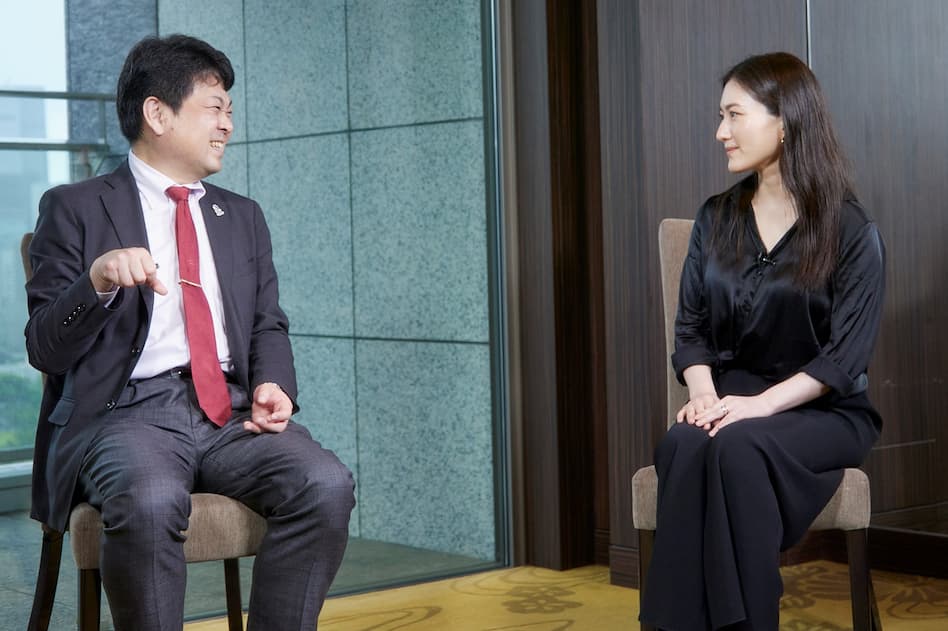
Tanaka: A child might worry about upsetting their mother if they don’t practice. They might really want to be out playing soccer but feel obligated to practice their instrument, for example. From that perspective, I wonder if small children should also be given such chances.
Sugiyama: At RCAST, our interaction with elementary school-age children is limited. Right now, a variety of pilot programs are underway in the name of STEAM education, but they are primarily for high school students and sometimes junior high schoolers. We are working hard with high school students—the youth poised to inherit our future—to show them new worlds and interesting ideas they might not know about. But most of the scientific content can feel rather dry, and we have yet to establish the mechanisms that encourage them to feel. I consider it very important for young people to be inspired by collaborations between the perspectives of science and technology researchers and fledgling artists. We are now inviting people from art universities to the RCAST campus as we start to put some new ideas into motion.
Tanaka: Is that something the students are doing amongst themselves?
Sugiyama: Yes. While inviting professionals has its merits, I think it’s crucial for students to first deepen their personal understanding through direct experience. While there are experiments to bring science and tech experts to art schools to get art students thinking differently, I think it is equally important that we bring in artists to encourage deeper emotional connection and to communicate this attitude to young people.
AI can only work off existing patterns. It might be able to create a piece of music in the style of Mozart, but it cannot create a new composition that transcends Mozart. (Sugiyama)
Sugiyama: Recently, generative AI and artificial intelligence have become really interesting topics of discussion.
Okuda: That's true, but AI will never have human sensibilities. That’s the difference.
Sugiyama: While AI has its strengths, it only works off existing patterns. It can come up with new patterns by recombining existing ones, but it can’t create something entirely different. It might be able to create a piece of music in the style of Mozart, but it cannot create a new composition that transcends Mozart. I do believe AI could aid in making management decisions based on existing information, but whether it can spontaneously suggest a novel approach is another question entirely.
Okuda: I’d argue AI lacks the ability to take risks.
Sugiyama: It is well-suited for giving standard medical diagnoses. If someone has a sore throat, AI can read indicators and dispositions from past data and can even analyze images. Once it recognizes a certain pattern and can detect a high probability of cancer, for example, that will be an important turning point.
Here’s another example. You can already ask an AI to compare two works by Shakespeare, and you’ll immediately get a pretty good answer. That’s how far the technology has come already, so people need to stay ahead of it. Japan is experiencing a labor shortage, and people often say that AI will take people’s jobs, but if you use it well, I don’t think that needs to be the case at all.
Okuda: At JERA, we’ve begun exploring open innovation initiatives, mostly grounded in existing business models and focused on what technologies to bring in—a conventional approach to extending what's already there. But experts say that humanity is familiar with only a few percent of all the energy and matter that exists in the universe. I couldn’t help throwing out the suggestion that we could also try working with new sources of energy and matter. We’re not going to be able to solve the planet’s energy problems with the planet’s known energy sources. We need to think outside the box.
Sugiyama: In discussions like that, I’m the kind of person who only uses the peripheral areas of their brain—that’s my field, after all. [laughs] It’s an open question as to whether any breakthrough solutions will emerge by 2050 or at other critical junctures in the climate crisis. For certain, we shouldn’t discount any unconventional solutions and try to implement whatever may be possible, but I think we also need to make the most of existing technologies, or else we risk heading into 2050 with no viable plan at all. We need both viewpoints. But merely pursuing incremental advances to existing technologies won’t suffice.
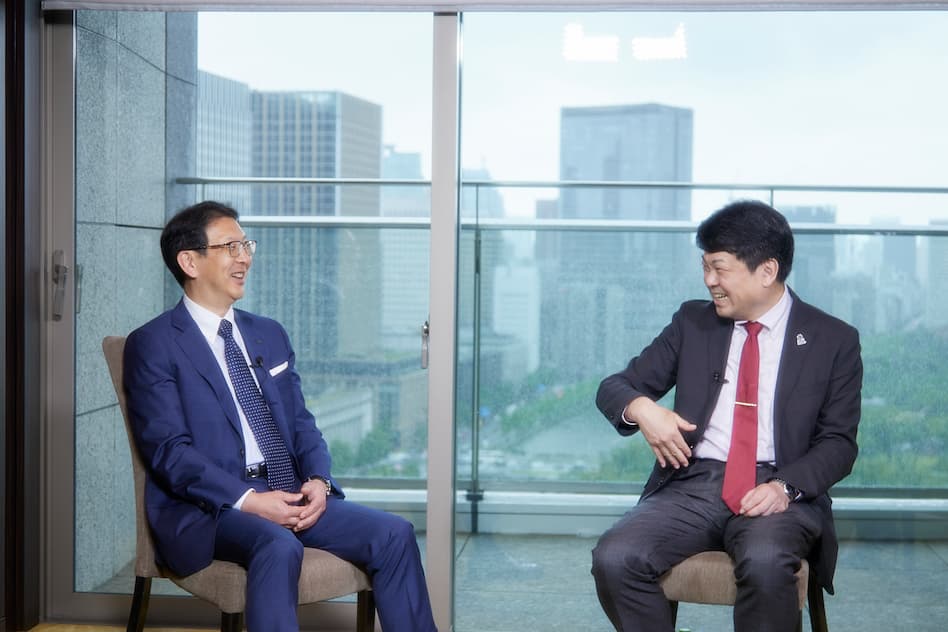
Okuda: We can already get a rough idea of what will happen. For example, you can easily anticipate the effect of instituting a 15% improvement in efficiency. So, whenever our company is considering a new technology, I think it’s feasible to allocate 95% of people to work on expanding our existing business while allowing 5% to experiment with out-of-the-box solutions and explore new horizons.
Sugiyama: In line with what I said about the need for artists on our campus, without freethinkers, we definitely miss something. We look to artists to express what we are unable to, so we want them to be free-spirited. Conversely, things that might appear mundane to an artist like Tanaka can be left to us to handle. I believe that both viewpoints are important.
When I hear about an environmental issue and talk to people who are active in environmental causes, it influences how I sing. It changes my mental picture when singing lyrics about a flock of birds taking off into the red sky at dawn, for example. (Tanaka)
Okuda: Ayako, you really are a curious person, and you talk to all kinds of people. Does that influence your music?
Tanaka: Sure, I absorb lots of influences. My view of the world has broadened considerably by talking to all sorts of people. As a professional musician, I'm totally engrossed in my work. While I might have an interest in, say, environmental issues it’s only through these different conversations that I learn about specific initiatives, such as renewable energy efforts. Interactions like that have definitely had an influence on me.
Sugiyama: I see. I'm curious about how this affects you when you're performing, not in terms of the technical aspects of your voice, but internally, before your voice comes out. Are you affected by what you are feeling, or would you say that a person’s internal state changes or is shaped by gaining a broader perspective?
Tanaka: It will change. I think that musicians are in a position to express on stage feelings that you cannot express in public. But, for example, if you see a little bit about environmental issues in the news, and you hear about people who are involved in specific activities, the scene that comes to mind will be a little bit different. When I was singing the lyrics about the birds flying away in the morning sun, I was thinking that maybe in 30 years time these scenes will disappear, and as an inhabitant of the earth, I want to do something about it, and I feel that it is a lovely, wonderful and important scene, and I want to share that with you, I think it comes back to that point.
Sugiyama: So, rather than merely singing about a pastoral scene, you get the sense that this scene may disappear, never to return, and when that emotion comes out, it can affect your vocal expression.
Tanaka: Precisely! It’s like how I still remember playing in a clear stream when I was a child. It is a feeling in my mind that deepens the feeling that such scenes may disappear, that they are fleeting, beautiful and missed.
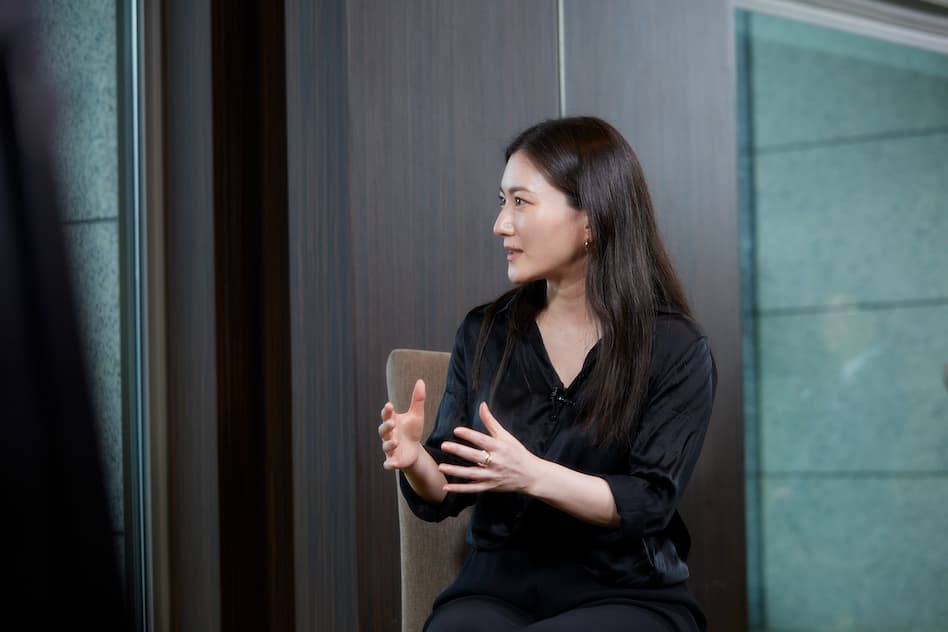
Sugiyama: That makes sense. We often engage in logical discussions about how important art is, but I now see that experiencing art is really meaningful! The world of opera, with its fantastical stories, gives us access to profound emotions that we might never encounter otherwise. Watching these performances is a vicarious experience that allows us to access emotional nuances that would otherwise elude us forever.
Okuda: There's still so much to talk about, but I’m afraid we have to bring our talk to a close. One theme that I felt came out of today’s conversation was how, in the end, art is the ability to feel. Whether in the realm of science and technology or the arts, it’s our shared human sensibility that connects us, and the presence of those feelings can pave the way to link different fields together, leading to the creation of new value. Striking the right balance between the ability to think and the ability to feel allows us to reach a new dimension of value creation. For me, I believe that’s today’s most important takeaway. In terms of fostering receptivity, one effective way is to provide a range of heartfelt experiences. By working together to create those mechanisms throughout society, I believe we can strike a balance between cognitive strength and emotional sensitivity. That is perhaps the biggest conclusion I came to today.
Thank you very much for such an enjoyable discussion today.
(Post-Interview)
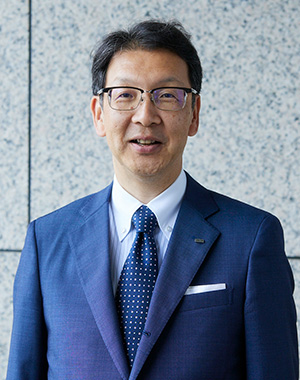
Dr. Sugiyama, a leading researcher in the fields of science and technology, spoke of how surprised he was when the talk turned to how “human sensibilities are what connect researchers in different fields” and that he deeply agreed with that sentiment. This is because fostering a balance between the ability to think and the ability to feel isn’t just necessary for cutting-edge technological development—it's also essential for value creation in the world of business. Akiko Tanaka spoke about how meeting and talking with people in different fields influences her inner dialogue while singing, and how it allows her to gain greater depth in her music. While art, whether pursued as a hobby or as a profession, is often thought of as wholly different from science or business, I came to appreciate anew how these fields commingle with one another and, by doing so, very naturally elevate each other to greater heights.
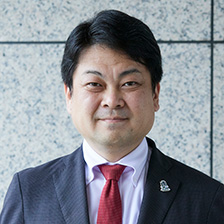
Director, Research Center for Advanced Science and Technology, The University of Tokyo
Masakazu Sugiyama, Ph.D.
Born in 1972, Sugiyama is an expert in energy systems. In 2000, he received a Ph.D. in Chemical System Engineering from the Department of Chemical System Engineering, School of Engineering, The University of Tokyo. In 2016, he was appointed as a professor at The University of Tokyo's School of Engineering, and since 2017, he has served as a professor at The University of Tokyo's Research Center for Advanced Science and Technology, where he was appointed director in April 2022.
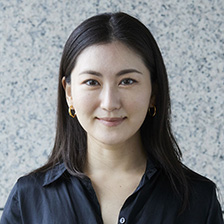
Ayako Tanaka
Soprano singer
President, Japan Association for Music Education Program
At the age of 18, Tanaka traveled to Vienna alone to study. At 22, she made her debut at the Stadttheater Bern in Switzerland, becoming the youngest soloist ever in the theater and the first Japanese person to perform there. Since then, she has performed in Vienna, London, Paris, Buenos Aires, and many other cities worldwide. Tanaka won “Best World Premiere Piece” by the Argentine Music Critic Association for her performance of Esteban Benzecry's “The 5 Cycle Songs for Coloratura Soprano and Orchestra" in Buenos Aires. The album received five stars from the BBC Music Magazine, the world's best-selling classical music magazine.
Tanaka is also engaged in giving back to society through activities such as the SCL International Youth Music Festival held in Vienna with the support of UNESCO and the Austrian government to assist young performers, as well as the National Youth Orchestra of Argentina, which was established with the support of the Argentine government to provide education to young people of various backgrounds and family situations through music.
Tanaka was named one of Newsweek's "100 Most Respected Japanese in the World" in 2019. She sang the Japanese national anthem on October 22 at the opening ceremony of the SMBC Nippon Series 2022.
Born in Kyoto, Tanaka lives and works in Vienna.
RELATED STORIES
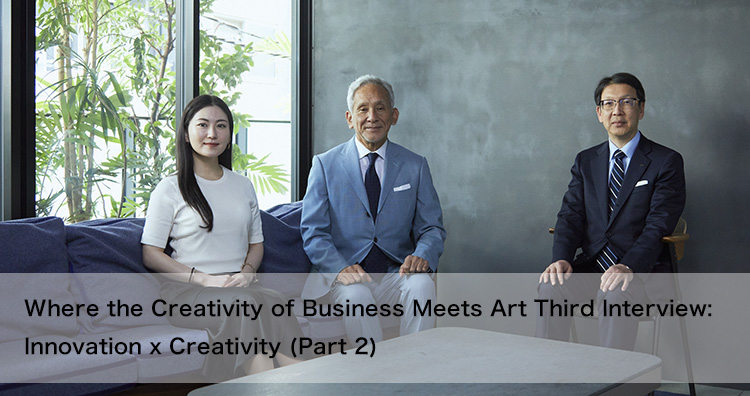
Where the Creativity of Business Meets Art Third Interview: Innovation x Creativity (Part 2)
All human beings become innovators the moment they're born. You should take a stab at doing something interesting, …

Where the Creativity of Business Meets Art Second Interview: Education x Creativity (Part 1)
Today marks the first time we’re doing a three-person interview. We are joined by Mr. Kaito Miwa, CEO and co-founder of …

Where the Creativity of Business Meets Art Second Interview: Education x Creativity (Part 2)
Recently, I've developed a new presentation style, where I seek to connect with the audience by openly sharing my weaknesses

